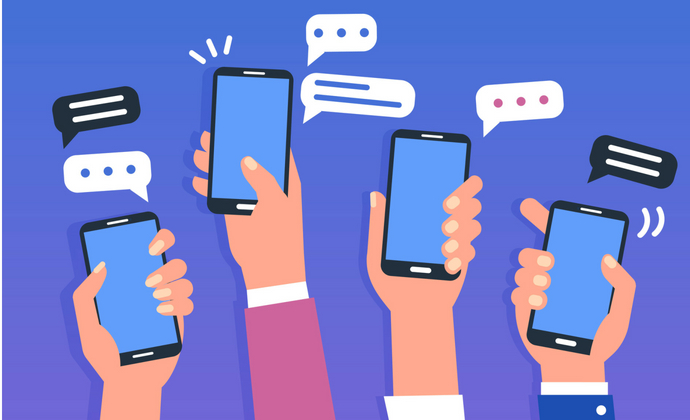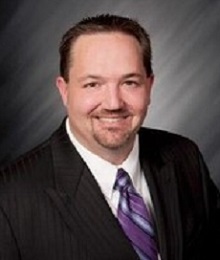Using Text Messages to Improve Healthcare Recruitment, Employment
Text messaging applicants accelerated the healthcare recruitment process at Community Health Network from a month to just days and helped hiring managers select high-quality employees.

Source: Thinkstock
- Getting qualified healthcare professionals in the door for interviews as quickly as possible is paramount for provider organizations facing a competitive healthcare recruitment and employment market.
The healthcare industry is in the midst of a clinician and healthcare professional shortage. The Association of American Medical Colleges (AAMC) estimates that the industry will be short of up to 120,000 physicians by 2030. The US Bureau of Labor Statistics also projects the need for 1.1 million new registered nurses to avoid a nursing shortage by 2022.
Healthcare organizations are also reporting a lack of non-clinical staff. About 61 percent of healthcare organizations faced a shortage of qualified applicants for non-clinical positions in the past year, a recent poll by the Medical Group Management Association (MGMA) found.
The high demand for qualified healthcare professionals gives providers, nurses, and other support staff the upper hand. Healthcare organizations must compete for the small pool of professionals to ensure their teams are stacked with the necessary providers to deliver high-value care.
Getting in front of qualified candidate as soon as possible is key to surviving in the competitive healthcare market, according to Scott Sendelweck, HR Digital Marketing Manager at Community Health Network. And for the non-profit health system of more than 200 care sites in central Indiana, text messages provided that instant connection.
READ MORE: Hospitals Face Healthcare Employment Challenges, High Turnover
“Using text messages, we're reaching out instantaneously,” he recently told RevCycleIntelligence.com. “I can instantly get to candidates no matter where they are as long as they have a cellular device and want to talk through text. If you were sitting at a Starbucks or picking up your laundry, no matter where you're at, we could start chatting right away about a position.”
Texting speeds up the healthcare recruitment, employment process
Adding text messages to Community Health Network’s recruitment strategy transformed the process, shortening it from about a month to just days.
Traditional healthcare recruitment starts with a phone call or email. The communication methods can instantly connect recruiters and candidates, but emails and phone calls do not always align with a healthcare professional’s busy schedule.

“If we were to find your application and we want to talk to you about a nursing position, then we would traditionally pick up the phone or send an email,” Sendelweck explained. “Turnaround times can especially vary for nurses because they are usually with patients. They also have lives outside of work. What we found was that turnaround time was anywhere from 72 hours to a week just to get in touch with the candidate.”
Response rates for emails and phone calls also ranged from 40 to 60 percent for some of the higher volume roles, he reported.
READ MORE: Staffing Shortages, Healthcare Reform Top C-Suite Concerns
The lag creates delays in the entire healthcare recruitment process, he continued. After waiting days to get in contact with a candidate, recruiters then have to wait for potential employees to come in for an interview and for hiring managers to review the candidate’s qualifications and make an offer.
Potential employees may also need an additional two weeks to leave their current position. Then, the training and onboarding process takes another week or more depending on the credentialing process for the position.
“We may be out to a month, maybe six weeks, in terms of completing process,” he stated.
But texting qualified candidates significantly shortened the healthcare recruitment process by targeting the initial connect between an applicant and a recruiter.
Potential employees are responding in less than 60 seconds using the text message healthcare recruitment tool from Canvas, Sendelweck reported.
READ MORE: Addressing Productivity, Labor to Bend the Healthcare Cost Curve
“We found that most candidates have mobile devices right now,” he said. “They have smartphones. We can reach them via their cellphone once they've applied to a position. With Canvas, we are up to an 83 percent response rate, and that happened within a month.”
By improving turnaround times and response rates, Community Health Network ended up shortening the entire healthcare recruitment and employment process.
For example, when the health system first launched its text messaging strategy, a recruiter reached out to 20 candidates around 3:30pm on a Friday. Based on the health system’s recruitment performance in the past, she expected to leave an hour later without any responses until Monday, Sendelweck shared.
However, the convenient option to text instead of call or email appealed to candidates. Fifteen of the 20 applicants responded by 4:30pm and the recruiter stayed until 6:30 that night answering questions from potential employees. By the end of Friday, she scheduled five interviews for Monday.
“It would take us two weeks to just to get applicants available and she was able to reach them on a Friday afternoon heading home from work,” Sendelweck highlighted.
Getting to know candidates through text
While text messages sped up the recruiting process, the convenient communication method also enabled recruiters and hiring managers to get to know their potential employees better before they even stepped through the door for a formal interview.
“You could find out a lot out about a person's attitude and professionalism through a text message and the hiring managers can see that,” he said. “They can see the responses if they're short, if they're long, or if there are emojis attached to them. They can tell if a conversation is going well within the first minute, or maybe two text messages back and forth.”
Text messages put candidates at ease, the health system’s recruiters found. They could discuss sensitive information without having to find a private area to discuss salary or leaving their current position. They could also talk about the position and their qualifications anytime throughout the day.
“At first, the text messages we were receiving were very formal,” he explained. “It was like an actual interview process. We're not using emojis or abbreviations. But as that interview progresses, we see a little bit of a decline in the formality and the formatting of the message. The candidates became more comfortable working through a text message.”
With applicants more comfortable with the recruitment process, Sendelweck and his team were able to quickly determine if a candidate would fit the health system’s culture and if they would be able to provide a high-quality patient experience.
“It's all about the patient experience. If we went out and we did some searches for individuals, they could be great on paper. They could have all sorts of certifications, high degrees, and 3 to 4.0 GPAs,” he stated. “But if the attitude and the personality aren’t there, then how do you feel that patient experience is going to be when you walk in the door?”
If applicants are engaged with the text messages, then it’s likely that they will be engaged with patients, he stressed. The new recruiting strategy enables hiring managers to see if a potential employee can put patients at ease while giving the best healthcare possible.
From reducing turnaround times to minutes from days and allowing personalities to come through before a formal interview, text messages transformed Community Health Network’s recruitment strategy.
The new healthcare recruitment strategy has enabled recruiters and hiring managers to select the best candidates for their open positions. And hopefully, that will help the health system keep high-quality employees.
“For Community, we are always looking for a better way to each our future caregivers to provide outstanding patient care,” he concluded. “If I could find outstanding people to provide outstanding care that means all of us who are currently working at Community will be here for some time.”
